
Materials:
• C Minor worksheet
• Pencils/pens
• Computer with internet connection and speakers.
• Examples of popular music using Major and Minor scales.
Discussion:
Last week we spent some time focusing on the Major Scale and getting to know the sound of it. Today we're going to spend some time working with another popular scale, the Minor Scale...
So, we already know the general feeling that the Major Scale creates (happy, upbeat, etc.). In contrast, how would we describe the Minor Scale?
(Instructor: Demonstrate playing a Minor scale (e.g A minor). If needed, refer to resource at bottom of the lesson for help.)
So what's the general feeling or vibe?
Now let’s listen to a few examples of songs that are built around Minor Scales:
(Instructor: Play short selections of variety of Minor key songs. Suggestions: - "Beautiful" by Akon - key of C Minor - Beethoven’s 5th Symphony – key of C Minor - "Glamorous Lifestyle" by The Jacka ft. Andre Nickatina (produced by Traxamillion) - key of B flat Minor - “Boulevard of Broken Dreams” by Green Day – key of F sharp Minor)
How would you describe the emotions of each of these songs? Very different, right?
As you can hear, the Minor scale can actually be used to convey a lot of different feelings. You might say that something that they all have in common is passion, or a strong emotion, whether it is loneliness, longing, or a taste for living a "glamorous lifestyle",
Like with the Major scale, the Minor Scale has a certain formula that it is built around. The
Minor Scale formula is:
W - H - W - W - H - W - W
W - H - W - W - H - W - W
Using this formula, let's quickly figure out the keys of the C Minor scale on the picture below...
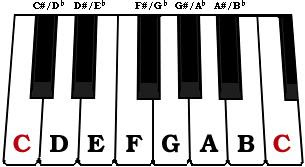
So, for today's assignment, you are going to be using C Minor. There are three parts to this assignment....
Part 1
1. Get a C Minor worksheet from the instructor.
2. Using the Minor scale formula (W-H-W-W-H-W-W), find and label the keys of the C Minor scale.
3. Have the instructor check your work before moving on to Part 2.
Part 2
1. Start a new Reason session.
2. Make sure you see a Mixer 14:2 at the top of your rack.
3. Set the Tempo to 80 BPM.

4. Create a SubTractor Analog Synthesizer.
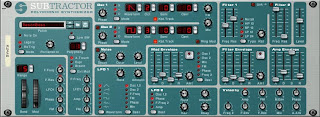
5. Click on the Browse Patch button in the upper left corner of the Subtractor.
 6. In the Patch Browser, go to Reason Factory Soundbank>Subtractor Patches
6. In the Patch Browser, go to Reason Factory Soundbank>Subtractor Patches 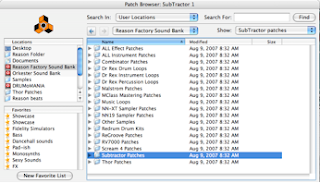
7. In the Subtractor folder, go into the folder called Polysynths and find a sound that you like.
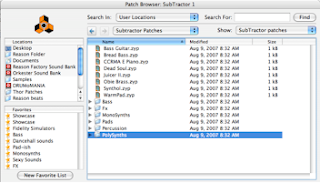
8. Make sure the L marker is on Bar 1 and the R marker is on Bar 5. (You may need to zoom in on the Sequencer to see the right numbers.

9. Make sure that both the Click and the Loop buttons are lit.


10. Hit Play and listen to the tempo of the click. Adjust it if you need to.
11. Practice playing the C Minor scale up and down in time with the click - each note should be played on the click. If you need to, feel free to slow the tempo down. Look at your worksheet if you can’t remember the keys.
12. When you are ready, hit Record and record yourself playing the scale up and back. Don't forget to wait to start playing at Bar 1!
13. Hit Stop when you are finished.If you don't like your performance, delete it and do it over. Keep working until you get it right!
14. Save this as: your name_CMinorScale.
15. Have the instructor check your work before moving on to the next lesson.
(Instructor: Collect C Minor worksheets for use in the following lesson)
Resources
www.looknohands.com - website for figuring out scales
Here’s how to use the looknohands website to listen to the A Minor scale:
1. Click on the link to go to http://www.looknohands.com/chordhouse/piano/
2. In the Scales column, click on a key (eg. A)
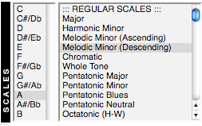
3. In the list of REGULAR SCALES, click on Melodic Minor (Descending).

4. Note the keys of the scale are now shown up in the keyboard diagram.
5. Click on the Play button to hear the scale.

6. When you've heard enough, click the Stop button.

No comments:
Post a Comment